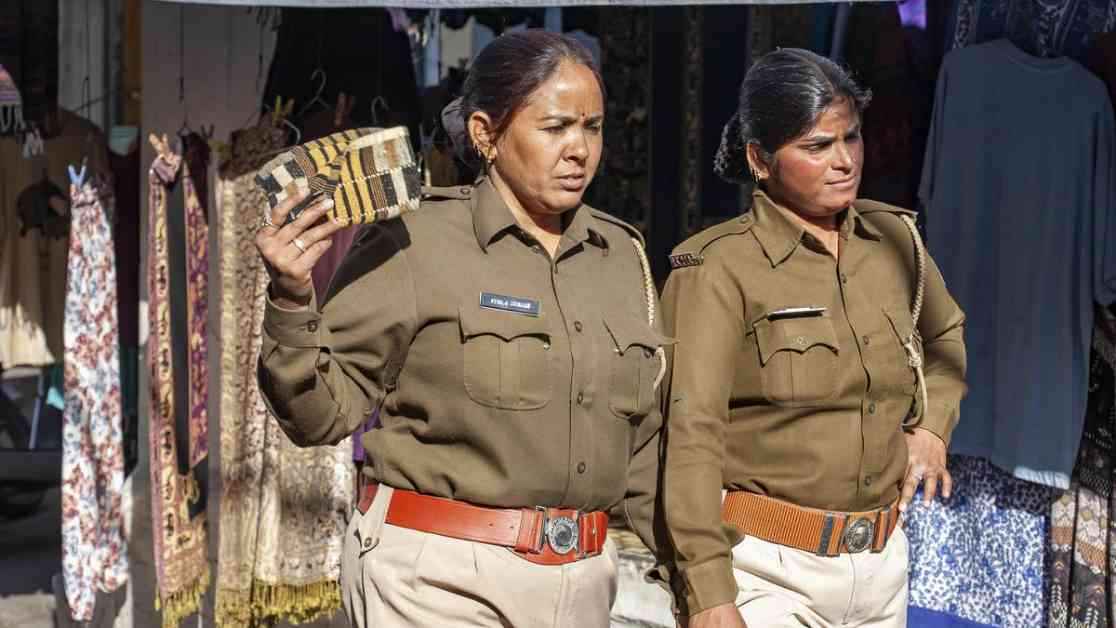India Justice Report 2025: States Fail to Meet Women Police Quotas
The India Justice Report (IJR) of 2025, unveiled in Delhi on Tuesday, exposes a stark reality: there are fewer than 1,000 women holding senior positions in India’s vast 20.3 lakh police force. This report serves as the country’s sole ranking of states based on justice delivery, shedding light on critical areas of improvement necessary for a fair and equitable society.
State of Affairs Across the Nation
The findings of the IJR 2025 are alarming, to say the least. Not a single state or union territory in India is meeting its reserved quotas for women in the police force. This failure to achieve gender parity within law enforcement agencies points to systemic deficiencies that must be addressed urgently to ensure a more inclusive and representative police force.
Uttar Pradesh emerges as a troubling case study, with the most overcrowded prisons in the country. Furthermore, the report highlights a concerning statistic: more than half of the High Court Judges in the state are conspicuously absent, raising questions about the efficiency and effectiveness of the judicial system.
Delhi’s prison population paints a grim picture, with 91% of inmates classified as undertrials. This revelation underscores the need for judicial reforms to expedite the trial process and reduce the burden on the prison system.
Tamil Nadu’s Tale of Success and Setbacks
On a more positive note, Tamil Nadu has retained its top ranking in prison management, thanks to increased budget allocations and optimal resource utilization. With one of the lowest staff vacancy rates in prisons nationwide and an impressive inmate-to-officer ratio, Tamil Nadu sets a commendable standard for other states to emulate.
However, the state’s performance in policing has declined, dropping from the third position in 2024 to 13th place this year. Issues related to budget allocation and training deficiencies have contributed to this setback, highlighting the need for targeted interventions to enhance law enforcement capabilities.
Karnataka’s Model of Success
Amidst the prevailing challenges, Karnataka stands out as a beacon of hope, being the only state to meet quotas for women in both the police force and judiciary. This achievement underscores the state’s commitment to gender equality and diversity within its law enforcement and legal systems.
Bihar’s Struggle with Judicial Backlogs
Conversely, Bihar grapples with a high percentage of pending cases, with 71% of trials in district courts remaining unresolved for over three years. This backlog not only undermines the credibility of the judicial system but also denies justice to countless individuals awaiting resolution of their legal disputes.
Gujarat’s Staffing Woes
Gujarat faces a different challenge, with the highest number of vacancies in High Court Judges and support staff. This shortage of personnel can impede the timely dispensation of justice and contribute to mounting caseloads that strain the judicial infrastructure.
National Overview and Concerns
The broader national landscape presents a mixed bag of successes and shortcomings in the realm of justice delivery. Alarmingly, approximately 17% of police stations across the country lack CCTV surveillance, compromising both the safety of officers and the transparency of law enforcement operations.
Moreover, nearly 30% of police stations do not have dedicated women help desks, hindering access to justice for female victims of crime. These deficiencies underscore the urgent need for investments in infrastructure and training to enhance the responsiveness and effectiveness of law enforcement agencies.
Financial Allocations and Priorities
The report’s analysis of financial allocations reveals stark disparities in spending across different pillars of the justice system. While the national per capita expenditure on legal aid stands at a mere ₹6, underscoring the need for greater resources to support marginalized and underprivileged individuals in accessing legal assistance.
Similarly, the per capita expenditure on prisons amounts to ₹57, reflecting the importance of adequate funding to ensure humane living conditions and effective rehabilitation programs for inmates. The national average spend per prisoner has increased in recent years, signaling a positive trend towards improving prison conditions and correctional outcomes.
The Road Ahead
As India grapples with systemic challenges in its justice delivery system, the findings of the India Justice Report 2025 serve as a wake-up call for policymakers, law enforcement agencies, and judicial authorities. Urgent reforms are needed to address gender disparities, reduce judicial backlogs, enhance resource allocation, and improve access to justice for all citizens.
Arunachal Pradesh’s recent establishment of a state human rights commission is a step in the right direction, albeit with room for improvement in terms of transparency and accessibility. By prioritizing accountability, efficiency, and inclusivity, India can pave the way towards a more just and equitable society for all its residents.














